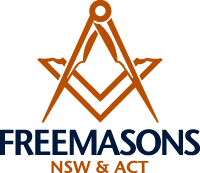
Sydney's most surprising island

Cockatoo Island was off limits for more than 100 years but in recent years has become a place to escape the everyday world and see history once again brought to life.
It is the world’s first urban waterfront campground, available for business and holiday accommodation, space for creative and cultural events and is ready to welcome the visitor to a new chapter in its long and illustrious history.
Cockatoo Island is a world heritage listed site and is part of the Sydney Harbour Federation Trust plan to transform former defence sites into foreshore parks. For many years, these sites were hidden from public view despite containing historic buildings, magnificent harbour views and defence heritage.
It is open to the public with ferries running regularly from Circular Quay. The best way to see the island is on foot. Selfnavigate on one of the suggested journeys and have your questions answered by one of the volunteers at Visitor Information.
If you wish to spend longer than a couple of hours, hire a tent or bring your own, rent a heritage holiday home with fully equipped houses sleeping ten. There are spaces available for hospitality, tourism, recreation, education and maritime use, or enjoy an exhibition or festival.
For those with limited time, there is a highlights tour of up to 90 minutes that takes in the top attractions and some of the more unusual features. These include the Powerhouse and the Fitzroy and Sutherland Docks. The Powerhouse and Chimney was the engine room of the island and was used to drive dockyard pumps and island machinery.
The Sutherland Dock, when completed in 1890, was the largest single graving dock in the world while the Fitzroy was built for the Royal Navy from 1847–57, mostly by convicts often waist deep in water and in leg irons. Conditions were harsh for the convicts, often being forced to scrub the bottoms of ships in icy rain and winds and using long brushes where the paint ran on to their body or splashed in their faces.
In the 1900s, it became an area where unions fought for better conditions with strikes common and the dockworkers leading union campaigns for a reduction of working hours from the standard 44 hours. Lead and arsenic-based paints were used and the families of men injured or killed on the job had to fight for compensation.
On the highlights tour, the visitor will also see the Isolation and Solitary Cells for unruly convicts, the Prisoners Barracks and the air raid shelters for protection during World War Two. The Dog Leg Tunnel was originally built to move workers and materials from one side of the island to the other. Visitors have a number of tours to choose from. There is the In-Depth journey of up to two and a half hours, the Convict Trail or the Maritime Trail, each of one hour, or just wander and see the sights.
Cockatoo Island was a convict prison between 1839 and 1869. It was 12.9 hectares of rocky, uninhabited, timbered land known as Wareamah when the Governor, George Gipps, decided to use the area for a prison. The timber was cleared and the ground levelled, the sandstone foreshores were blasted with gunpowder to build a dry dock and when the Fitzroy Dock was completed the island had expanded to 17.9 hectares. The Convict Trail passes through all the convict sites on the island, starting with the Fitzroy Dock and moving on to the Convict, Ship Design and Historic Residence Precincts.
Walk in the Convict Courtyard, experience the Mess Hall and the Military Guardhouse, examine the Convict Cisterns built by prisoners in the 1850s as a series of rectangular water tanks cut into the rock, or the Silos, chiselled down by hand out of the island’s bedrock as evidence of a remarkable colonial enterprise.
In 1913, the island became the Commonwealth Dockyard where the Sutherland Dock was used by large Royal Navy vessels and then RAN battle cruisers for repairs, refitting and shipbuilding. The Dock had a good record and by midway through World War One had built a number of ships for the Navy, including torpedo boat destroyers and HMAS Huon, Torrens, Brisbane and Adelaide Town.
During World War Two, some 4,000 men and a few women were employed at the island to build some of Australia’s largest ships and its first aircraft carrier. The dockyard closed in 1992 and the Maritime Trail takes in the key sites of the island’s shipbuilding history over a period of more than 100 years.
Start the tour at one of Sydney’s most appealing watering holes, the Island Bar, situated on the waterfront and constructed from recycled shipping containers. There is also a fully licenced canteen open daily for breakfast and lunch.
Cockatoo is the only harbour island where visitors can stay overnight. It has a range of options to suit all budgets and tastes ranging from luxury houses and apartments to camping and is less than 30 minutes from the Quay.
The Sydney Harbour Federation Trust has been collecting and storing memorabilia to use during an exhibition later this year to celebrate the history of Cockatoo Island and the people employed there.
Article extracted from Freemason magazine, June 2014, pages 8 and 9.


